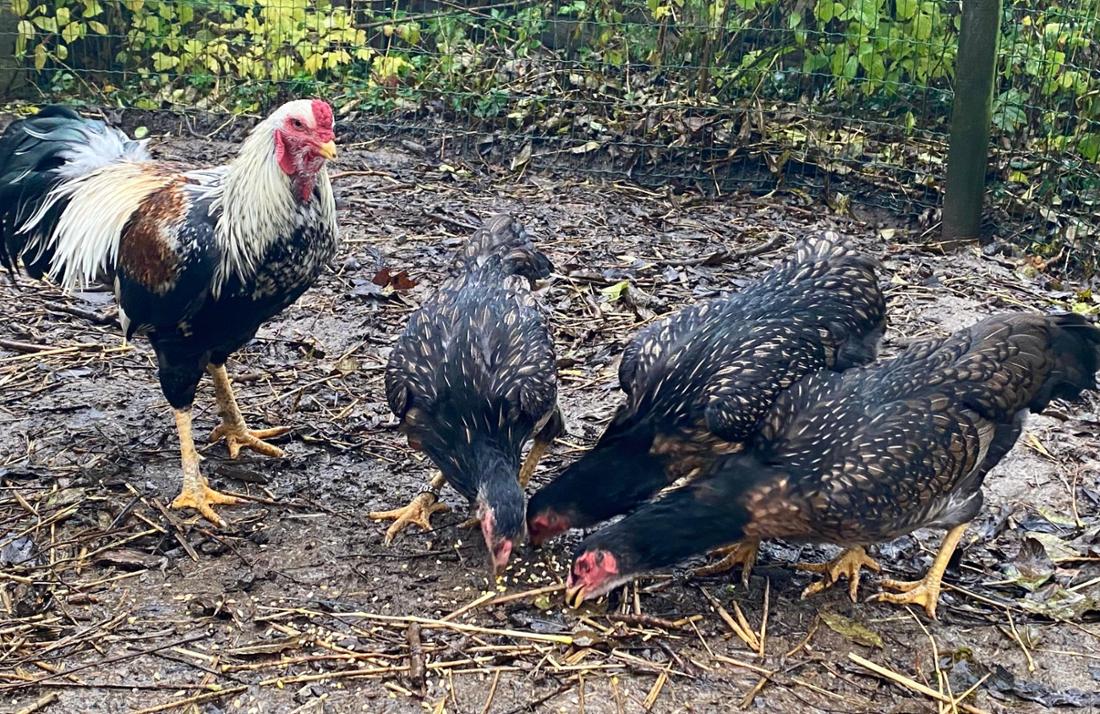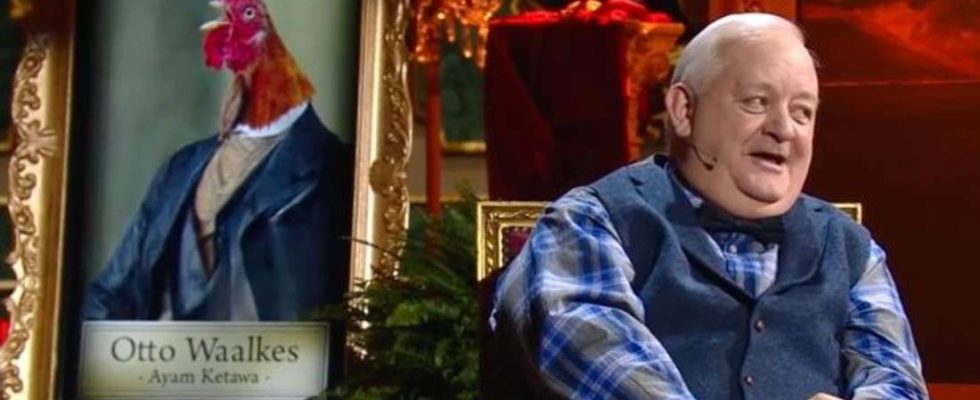When this rooster crows, it laughs: The animal made of sulphur could be heard on Saturday evening on the ZDF television show “Wetten,dass..?” with Thomas Gottschalk.
Sulfur – This rooster is the only feathered animal that Andreas Brinkmann now calls by name. More precisely, since Saturday evening. Because “Otto Waalkes”, as the rooster of the breed poultry farmer from Schwefe has been called since then, was part of the ZDF television show “Wetten,dass..” with Thomas Gottschalk.
| Surname | Ayam Ketawa (Laughing Chicken) |
| origin | Indonesia |
| Eggshell color | white |
It was the first bet of the last edition with presenter Thomas Gottschalk. Candidate Horst Freckmann from Bochum bet that he could recognize 50 roosters by their crowing. After the first two crow calls, which the betting candidate was able to successfully identify, Andreas Brinkmann’s feathered animal from Schwefe finally set the tone – and caused a lot of laughter in the audience and from Matthias Schweighöfer, who had meanwhile sat down on the sofa .
“Bet that”: Crowing of the rooster resembles laughter
Because when this rooster screams, he laughs. And to many ears that sounds different than a normal cockcrow. “This breed doesn’t actually crow at all,” explains Brinkmann. “The laughter has a recognition value.” And so the betting candidate finally recognized rooster No. 3: “Otto Waalkes” belongs to the “Ayam Ketawa” (Laughing Rooster) breed and lives “near Soest,” was Freckmann’s answer , which gave him the third point of his bet.
“The animals all sound different. Some people laugh very quickly, like a machine gun,” says Brinkmann. Other animals of the breed would have a laugh that is very similar to that of humans.
I only ever breed a few animals of this breed. In recent years, however, I have not raised roosters, but mostly hens. That’s my huge problem.
Rooster “Otto Waalkes” is the oldest poultry at seven years old and the result of Andreas Brinkmann’s very first brood. “Back then I had a rooster and two hens and that’s how I raised the first animals,” he says. Today, the chairman of the Soest/Schwefe 1995 Pedigree Poultry Breeding Association (RGZV) owns around 100 roosters and hens. Sometimes he breeds with natural brood, sometimes with the help of an incubator. “You have a higher number of young animals and can keep the hens laying,” says Brinkmann.
With laughing cock also at competitions
However, the laughing chickens are difficult to breed with the incubator. After three to four days, the brood is examined to see whether the eggs are fertilized or not. Because of the changeable weather, breeding was difficult this spring. And now in the fall the animals are having a hard time molting because it has been warm for a long time.
“I only ever breed a few animals of this breed,” he says. However, in recent years he has not raised any roosters. For the most part only hens were hatched. “That’s my problem,” says Brinkmann. In addition to “Otto Waalkes”, he also has another rooster. However, he doesn’t laugh so well. “We also hold competitions with the long crows,” explains Brinkmann, which is why he always chooses the rooster with the most beautiful smile for breeding.

In September, the ZDF television team was at his farm to take the recordings. At 4:30 p.m. The roosters usually crow in the morning – and very reliably. It took around an hour for the team to get the cockcrow in the box.
Cockcrow of the “Koeyoshi” breed recorded for bet
However, it wasn’t just Ayam Ketawa’s crowing that was recorded. Because Andreas Brinkmann breeds a second breed with a special sound: “Koeyoshi” are the most idiosyncratic of the long-crowing chicken breeds in Japan and crow in an extremely low pitch. “They crow more like a siren,” says Brinkmann, explaining the peculiarities of his favorite breed, which would also have been very easy for the betting candidate to recognize. However, the rooster of the Koeyoshi breed from Schwefe did not make it out of the five rooster cries that Freckmann needed to win the bet.

Andreas Brinkmann is pleased that people were now able to get to know the rather rare chicken breed as part of the television show. “That was the best advertisement for our hobby,” says the club chairman happily, who was traveling with his wife in Cologne at the time the program was broadcast and who watched the bet with his pet’s appearance in the station’s media library afterwards. 50 members and ten young people are currently part of the RGZV Soest/Schwefe 1995.
Pedigree poultry show
On January 6th, from 2 p.m. to 6 p.m., and on January 7th, from 10 a.m. to 4 p.m., the breed poultry show with around 300 animals will take place in the shooting hall in Enkesen. Due to bird flu and the requirements of the veterinary office, waterfowl will not be represented.

